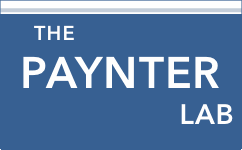 |
Karen Kesler
Karen received her PhD in 2015 in the MEES program studying the community and trophic ecology of oyster reefs in the Chesapeake Bay. Karen came to the Paynter Lab after working at Chesapeake Environmental Management, an environmental consulting firm, and completing her undergraduate work in Biology at Tufts University. Karen’s PhD project allowed her to experience many aspects of the world of marine science including field collections and deployments, data analysis, and a crowd favorite, benthic sorting. Karen now works for the Environmental Protection Agency in Texas! When she isn’t hunting for amphipods or collecting oyster poo, Karen likes to climb, make banana bread, and hang out with friends. |
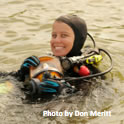 |
Adriane Michaelis (2010-2014)
After working as a faculty research associate in the Paynter Lab since 2010, Adriane left to begin pursuing a PhD in anthropology, specializing in ecological anthropology. Her current research can be found here. Adriane completed her master’s degree at the University of North Carolina Wilmington using stable isotopes to study marsh sparrow ecology and worked for Audubon North Carolina before moving to the DC area. Adriane is a U.S. Coast Guard-licensed Captain, in addition to being one of the lab’s scientific divers. Outside of her research, Adriane can usually be found herding things with her two border collie mixes. |
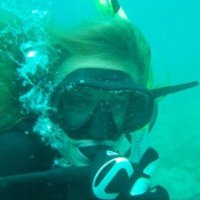 |
Kara Muzia
Kara worked with the Paynter Lab as a is a staff biologist with the Oyster Recovery Partnership (ORP) and joined the Paynter Lab as a diver in 2014. She completed her bachelor's degree in biology at Florida Atlantic University and conducted water sampling in the Gulf of Mexico before moving to Maryland in 2012. Kara was part of Maryland DNR's blue crab program prior to transitioning to the ORP. Currently, she is travelling the world!. |
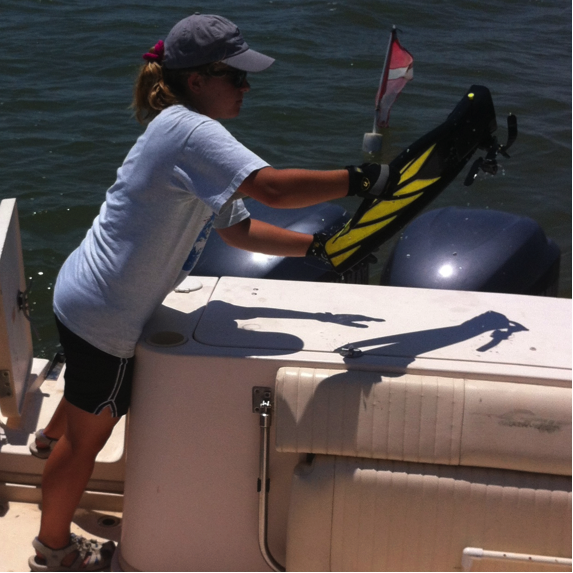 |
Jamie Attanasio
Jamie is a high school student at Thomas S. Wootton High School in Rockville, MD. Jamie began volunteering with the lab in the summer of 2013, and has helped with many aspects of the lab and fieldwork including watching divers, taking care of lab animals, testing for Dermo, and entering data. Jamie joined the lab because she is an oyster gardener for the Chesapeake Bay Foundation, and wanted to see how the oysters were faring after they are planted on their sites. When she isn't helping out around the lab, Jamie is running, reading, or playing bass. |
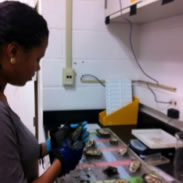 |
Michelle Gray
Michelle joined the lab as a high school student at Eleanor Roosevelt High School in 2012. Michelle furthered the work on oyster heart rates that Drew Needham started by examining the impact of salinity on oyster heart rates. Michelle stayed on with the lab through the summer of 2013, continuing heart rate studies and helping in the field. She began the Honors program at the University of Maryland in the fall of 2013 and continued to contribute to the lab’s work through the year. When Michelle isn’t being a rock-star student she is a lifeguard and champion oyster shucker (see photo)! |
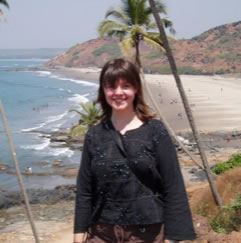 |
Sara Lombardi
Sara continued her work in the Paynter Lab as a post-doctoral research associate after completing her Ph.D. on the physiological ecology of Crassostrea virginica and C. ariakensis in 2012. Currently, Sara is a lecturer at the University of Maryland, and teaches Human Anatomy and Physiology. She can be fund here! Sara’s research interests include understanding the role of ecological factors, particularly oxygen tension and predation pressures, on the metabolic processes of marine species. Other than oysters, Sara enjoys spending with her family, traveling, ice hockey, and collecting shark teeth. |
 |
Taylor Davis (2011–2012)
As an undergraduate researcher, Taylor conducted research on the predation of mud crabs on oyster spat. Taylor is currently a faculty research assistant in the entomology department at UMD. |
 |
Grace Chon (2009-2011)
As an undergraduate researcher in the Paynter Lab, Grace was exposed to the real world of science research. She finished her biology honors program in this lab by researching shell properties between two oyster species. Grace is currently working on her master's degree in marine science at Hawaii Pacific University and is pursuing her dream of working with coral reefs. |
 |
Rebecca Kulp (2008-2010)
Rebecca completed an honors thesis in the Paynter lab during her junior and senior year at UMd. Her honors thesis work involved examining the predator-prey relationships between two mud crab species (Eurypanopeus depressus and Rhithropanopeus harrisii) and juvenile oysters (Crassostrea virginica). Rebecca is now in her second year of the Marine Science PhD Program at Stony Brook University, where she has joined Bradley Peterson’s benthic community ecology lab. She is not only continuing to research the role of mesopredators in marine communities, but has started to examine how multiple predator effects structure food webs |
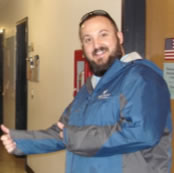 |
Vince Politano (2008-2010)
Vince was the Paynter Lab manager from 2008–2010. Vince was not only a valuable diver and captain, he was also instrumental in raising the bar for data organization and analysis in the lab. Vince is currently the lab manager for the Heppell Laboratory at Oregon State University. |
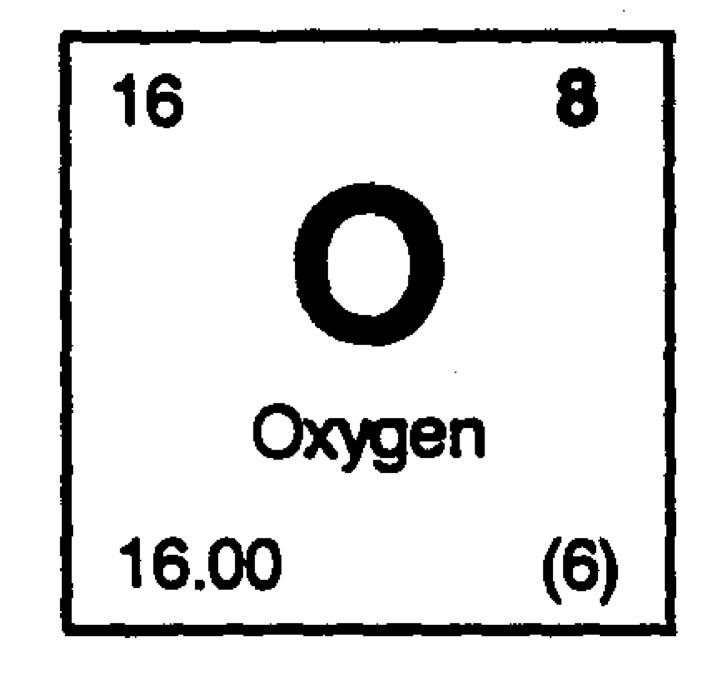 |
Nicole Harlan
Nicole was a graduate student working on the comparative physiology of the native oyster, Crassostrea virginica, and the Asian oyster, Crassostrea ariakensis. She is now an internal medicine resident at the University of North Carolina. |
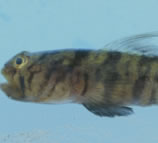 |
Terra Lederhouse
Terra was a graduate student in the Paynter Lab and received her M.S. from the MEES program in 2009. Terra's graduate research focused on the influence of oyster reef restoration on the productivity of naked gobies (Gobiosoma bosc). In 2008, Terra was a Dean John A. Knauss Marine Policy Fellow in the NOAA Fisheries Office of International Affairs. She has worked as a marine habitat specialist in the NOAA Fisheries Office of Habitat Conservation in Silver Spring, MD since 2009.
(Photo source: http://www.gobiidae.com/sp_pics?GOBIOSOMA_HILDEBRANDI_male_01.jpg) |
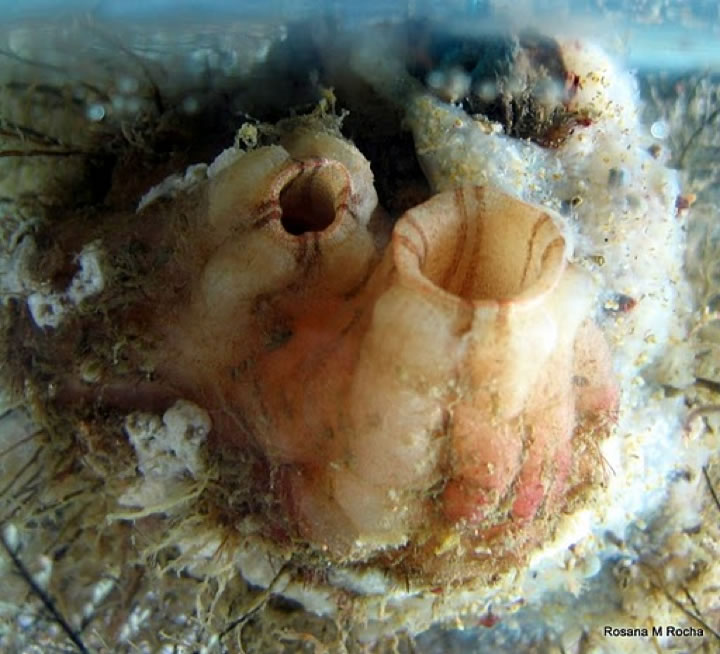 |
Lisa Kellogg
Updated profile coming soon!
(Photo source: http://invasions.si.edu/SpImages/Styela%02plicata%2ORR.jpg) |
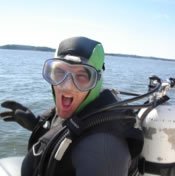 |
Jake Goodwin (2003-2007)
Jake was the Paynter Lab manager from 2003 – 2007. He captained the lab’s research vessel, was an active scientific diver, and helped with dermo detection and faunal analysis of oyster habitats. Currently, Jake is a PhD Candidate in the MEES program at Horn Point Laboratory working with Elizabeth North on larval identification and transport. |
 |
Mark Sherman (2004-2007)
Mark worked for the Paynter Lab as a research technician extraordinaire while he earned his bachelor's degree at UMD. He continued on to his master's degree at the University of North Carolina Wilmington, using AFLP fingerprinting to study bay scallop population structure. Mark is currently a biology instructor at Coastal Carolina Community College in Jacksonville, NC. |
 |
Paul Miller (2005-2007)
Paul worked for the Paynter Lab as a lab and field technician. His tasks included testing for dermo, processing samples, and creating a massive spreadsheet collection using Microsoft Excel and Access. After graduating and leaving the lab, he became interested in data processing and manipulation and went on to get a master's degree in computer science. Paul began working for software companies, solving their data problems and designing enterprise scale computer systems. Paul is currently a Senior Systems Engineer for Northrup Grumman. |
 |
Steve Allen
Updated profile coming soon! |
 |
Bill Rodney (2001-2006)
Bill was a graduate student in the Paynter Lab from 2001-2006. His research focused on macrobenthic community composition and factors that influence it. Since receiving his MS in 2006 he has been employed as a marine biologist at Texas Parks and Wildlife Department’s (TPWD) Dickinson Marine Lab where he is the lead biologist for TPWD’s Oyster Habitat Restoration and Mapping Group. Since starting the group in 2006, Bill and the rest of the team have restored more than 200 acres of oyster reef habitat through cultch planting activities. The group has also collected more than 200 square miles of side scan sonar and scientific echosounder data in Galveston Bay and other Texas estuaries. |
